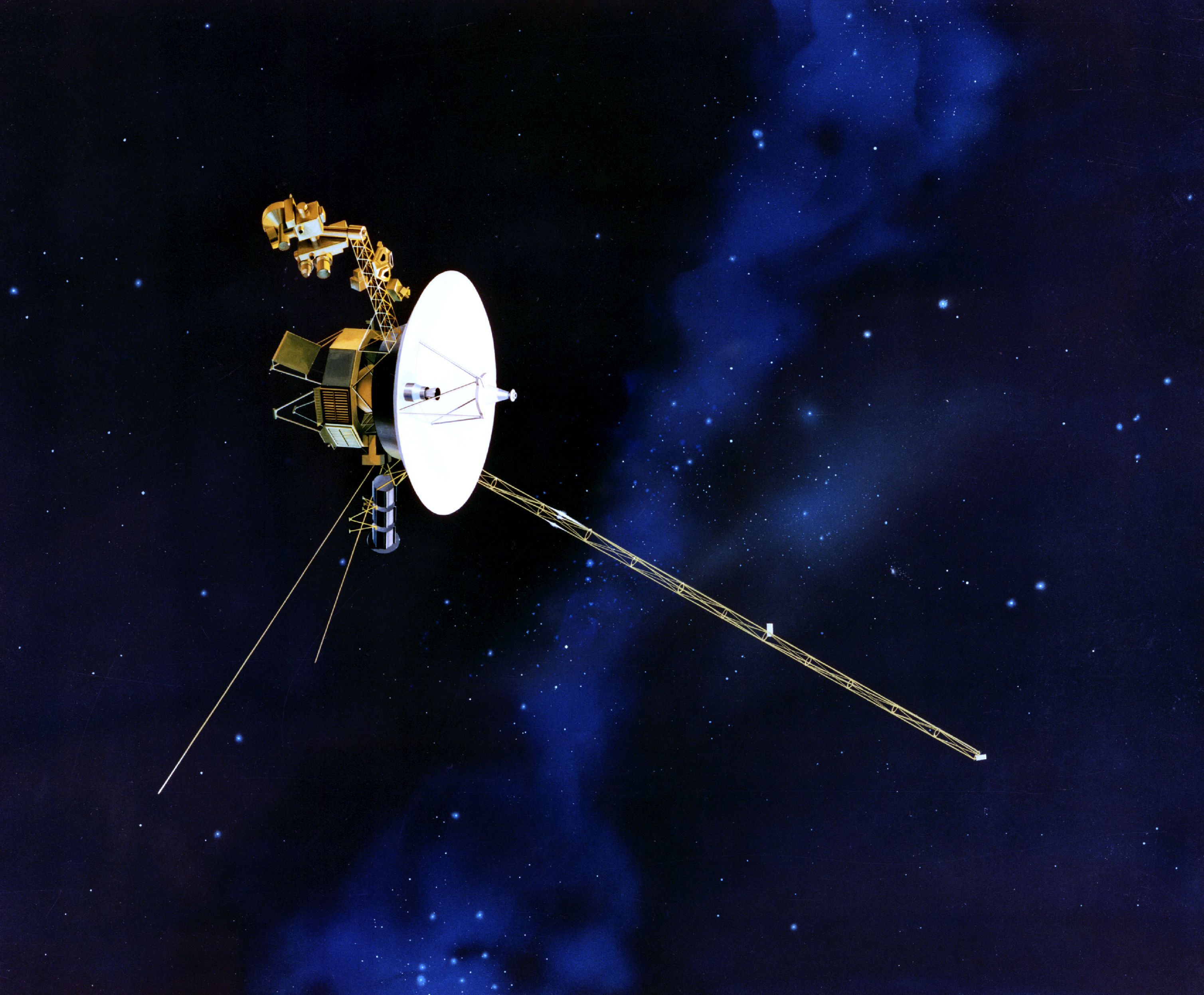Why study exponents?

Artist’s concept of Voyager in flight Mathematicians, scientists, and economists commonly encounter very large and very small numbers. For example, Star Wars fans may remember Han Solo bragging about the Millennium Falcon’s ability to make the Kessel Run in less than 12 parsecs in Episode IV. He was referring to a smuggler’s route with sections that were flown in hyperspace, making length an important factor in how quickly a ship could make the run.
When making measurements in astronomy, the distances we deal with are often – well – astronomical! A parsec is a convenient unit of length used to measure large distances to objects outside the solar system. A parsec is equal to about 31 trillion kilometers, or 19 trillion miles in length. Rather than writing all the zeros associated with the number 1 trillion (1,000,000,000,000) we commonly use the written words or scientific notation. Scientific notation uses exponents to represent the number of zeros that come before or after the important digits of a very small or large number. Using scientific notation, 19 trillion miles would be written [latex]{1.9}\times{10}^{13}[/latex] miles. In this example the number 13 is the exponent and the number 10 is referred to as the base.
The most distant space probe, Voyager 1, was 0.0006 parsecs from Earth as of March 2015. It took Voyager 37 years to cover that distance. Voyager 1 was launched by NASA on September 5, 1977. As of 2013, the probe was moving with a relative velocity to the sun of about 17030 m/s. With the velocity the probe is currently maintaining, Voyager 1 is traveling about 325 million miles per year, or 520 million kilometers per year. Here are some more distances to well-known astronomical objects in parsecs:
- The distance to the open cluster Pleiades is 130 parsecs from Earth. That’s [latex]{1.7}\times{10}^{15}[/latex] miles.
- The center of the Milky Way is more than 8 kiloparsecs (a kiloparsec is 1000 parsecs) from Earth, and the Milky Way is roughly 34 kiloparsecs across.
- The nearest star to Earth (other than the sun), Proxima Centauri, is about 1.3 parsecs from the sun.
- Most of the stars visible to the unaided eye in the nighttime sky are within 500 parsecs of the sun.
In this section, you will learn the rules for algebraic operations in terms with exponents, then apply them to calculations involving very large or small numbers. We will then use exponents and their properties as we learn about polynomials.
MODULE 5 Learning Objectives
5.1: Exponent Properties
- Evaluate exponential expressions
- Apply the Product Rule to simplify an expression
- Apply the Quotient Rule to simplify an expression
- Apply the Power Rule to simplify an expression
- Raise a product to a power to simplify an expression
- Raise a quotient to a power to simplify an expression
- Define and use the Zero Exponent Rule
- Define and use the Negative Exponent Rule
5.2: Exponent Properties Used Together
- Simplify expressions using a combination of exponent rules
- Simplify expressions with negative exponents using a combination of exponent rules
5.3: Scientific Notation
- Convert from decimal notation to scientific notation
- Convert from scientific notation to decimal notation
- Find the product of numbers written in scientific notation and write in appropriate scientific notation form
- Find the quotient of numbers written in scientific notation and write in appropriate scientific notation form
5.4: Introduction to Polynomials
- Determine if an expression is a polynomial
- Identify the characteristics of a polynomial
- Determine if a polynomial is a monomial, binomial, or trinomial
- Evaluate a polynomial for a specified value
- Simplify polynomials by combining like terms
- Determine the domain of a polynomial function
5.5: Adding and Subtracting Polynomials
- Add polynomials
- Find the opposite of a polynomial
- Subtract polynomials
5.6: Multiplying Polynomials
- Find the product of monomials
- Find the product of a monomial and a polynomial
- Find the product of two binomials
- Using the Distributive Property
- Using the FOIL Method
- Using the Table Method
- Square a binomial